8 Total Quality Management Principles for Continual Improvement
Why do organizations prioritize continuous quality improvement? According to a recent survey conducted by Temkin Group, companies that already earn $1 billion can garner an additional $700 million in three years by investing in quality improvement and customer satisfaction. This is why organizations need Total Quality Management (TQM); the principles of this management technique help you achieve long-term success by improving quality.
Keep reading to learn more about the principles of total quality management, their role in continuous improvement, and some crucial quality management tips.
What is Total Quality Management?
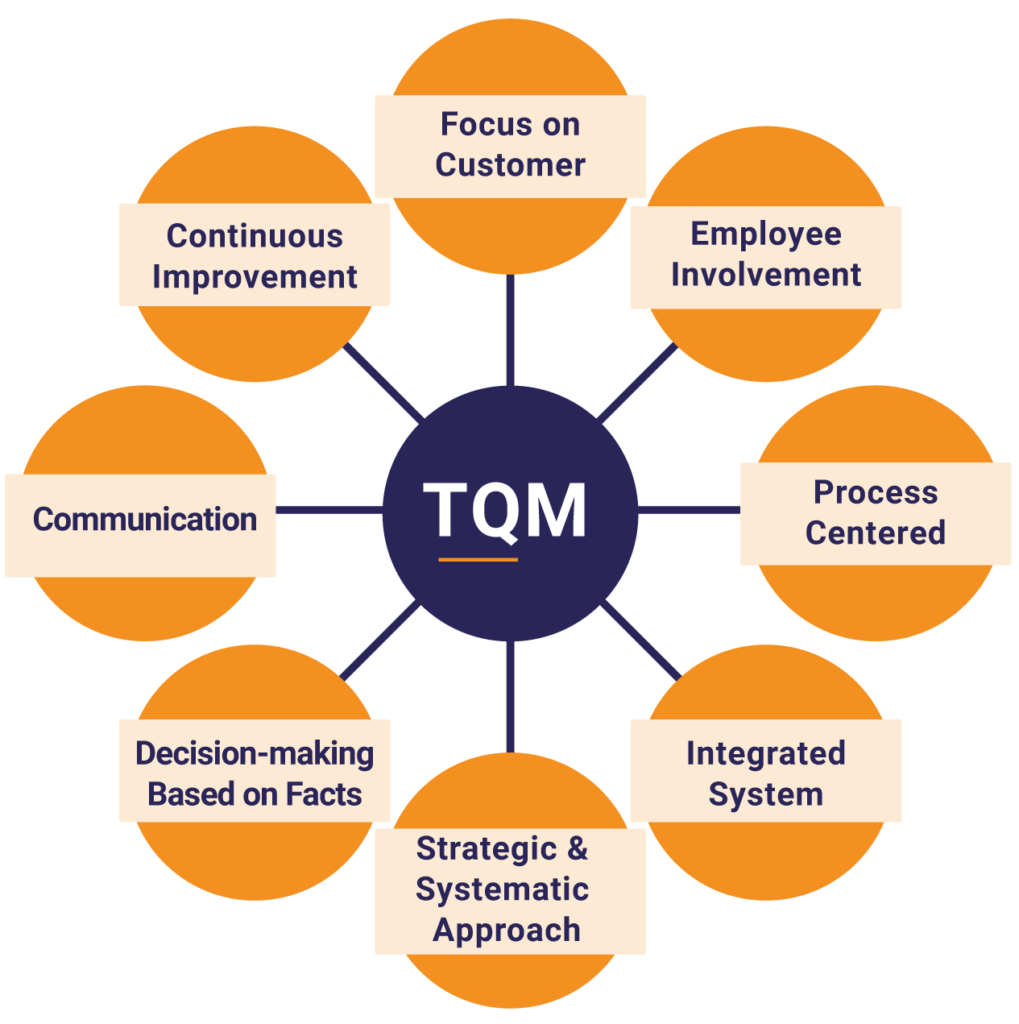
Source: Juran
Total quality management is widely recognized as an effective method to achieve continuous quality improvement by enhancing the overall performance of an organization. It refers to the collection of efforts aimed at improving customer satisfaction using an integrated system of techniques, tools, and training sessions.
This management method upholds the fact that the customer is the ultimate judge of your product’s quality. More importantly, it focuses on the quality of the processes that help develop the product.
Role of Total Quality Management in Continuous Improvement
Organizations that deliver products and services of substandard quality are bound to lose out to competition. To stay ahead of the game and to keep up with the ever-changing trends in the market, they need to accept and act on the importance of continuous improvement.
According to total quality management principles, all departments of the organization should work hard to improve the quality of their respective operations.
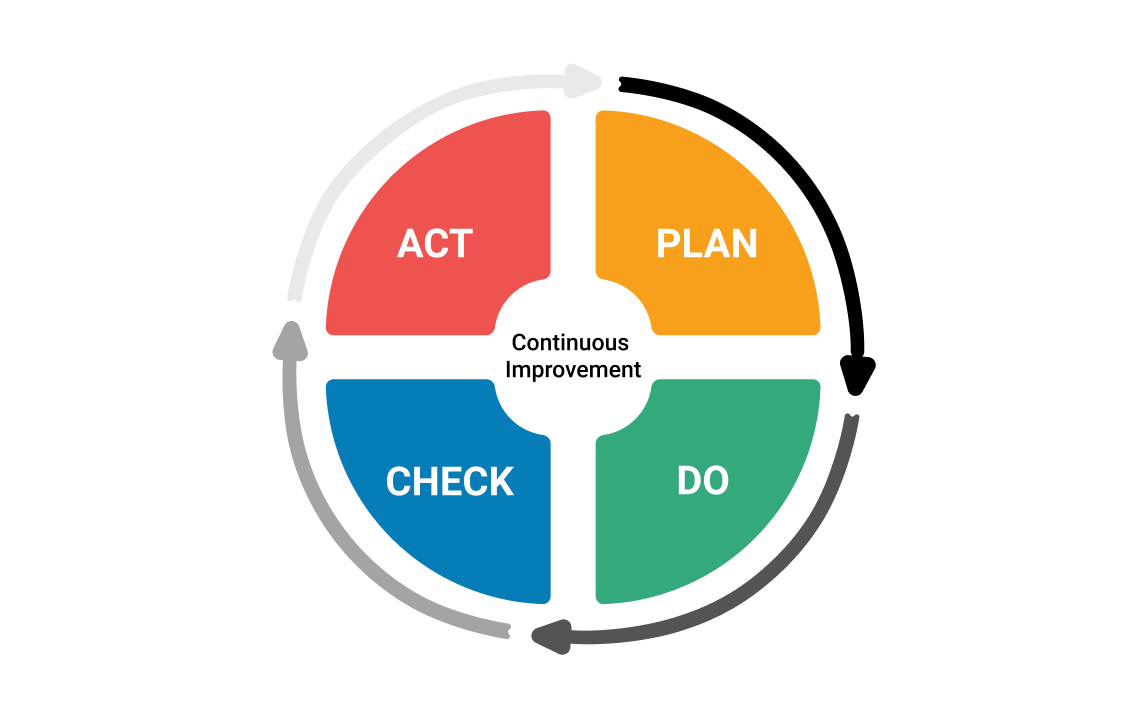
Source: Kanbanize
Let’s look at some of the important metrics in performance evaluation, as mandated by TQM:
- Identification of improvement opportunities
- Management’s top priority for quality
- Department heads’ priority for quality
- Importance ascribed to quality-related discussions
- Level of comprehensiveness and clarity in quality management plans
Quality goals set by total quality management are very dynamic targets; they require effective metrics and consistent tracking. It considers important aspects, such as leadership, growth, support, training, and communication. In short, total quality management emphasizes the overall quality of the organization by consistently improving the quality of operations.
8 Total Quality Management Principles
As with most management methodologies and techniques, total quality management has its own set of principles. These principles prescribe a series of techniques you can use to identify areas of improvement.
Here are principles of total quality management:
1) Customer Focus
This principle is based on the fact that customers decide the quality of your product or service; the ultimate focus should be on people who utilize what you deliver. Satisfied customers are crucial in increasing your sales, market share, and revenue. If your product caters well to their requirements and lasts long enough to satiate their needs, they will acknowledge its quality. The trick is to understand what your customers want, so you can figure out what resources you need to build your product.
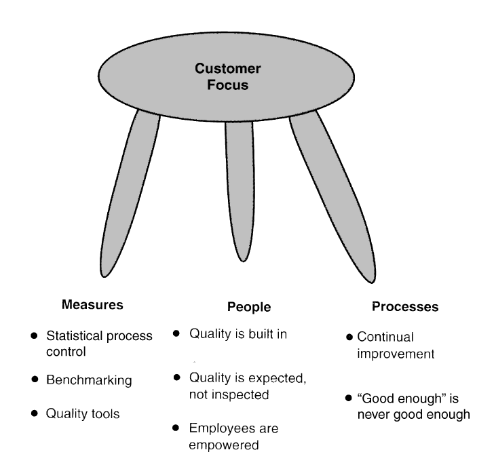
Source: Gvanniyas
How can you execute this total quality management principle? Here are some tips:
- Conduct thorough market research; identify gaps and understand your customers’ needs
- Manage your customer relations
- Make sure your organization’s objectives align with the needs of your customers
- Do not forget to satisfy your owners and employees
2) Total Employee Commitment
To maximize productivity or increase sales, you need your employees to be fully committed. They need to embrace the vision and objectives of the organization. To equip them to achieve their targets within time constraints, they need to be thoroughly trained and given the right resources.
How does this principle add value to your organization? It boosts employee retention; the happier your employees, the longer they want to work for you. They would also take accountability for their tasks and actively participate in problem-solving.
Here’s how you can implement this principle in your organization:
- Be accurate when you communicate what you ask of each employee; make sure they feel valued
- Motivate your employees to assess the quality of their own contributions, and encourage them to make modifications
- Give appreciation wherever it is due; this will build confidence in your employees
- Give them ample opportunities to learn and grow; help them boost their competence and confidence
- Sustain a safe environment for employees where they can discuss their challenges and worries
3) Process Approach
Business processes are central to guaranteeing consistency and fast production. Following predetermined workflows and sticking to standard business processes are of paramount importance in quality management.
This principle aims to bring down costs by expediting development and production cycles. The consistency eventually produces predictable results. This will help you give due attention to the continuous improvement of processes.
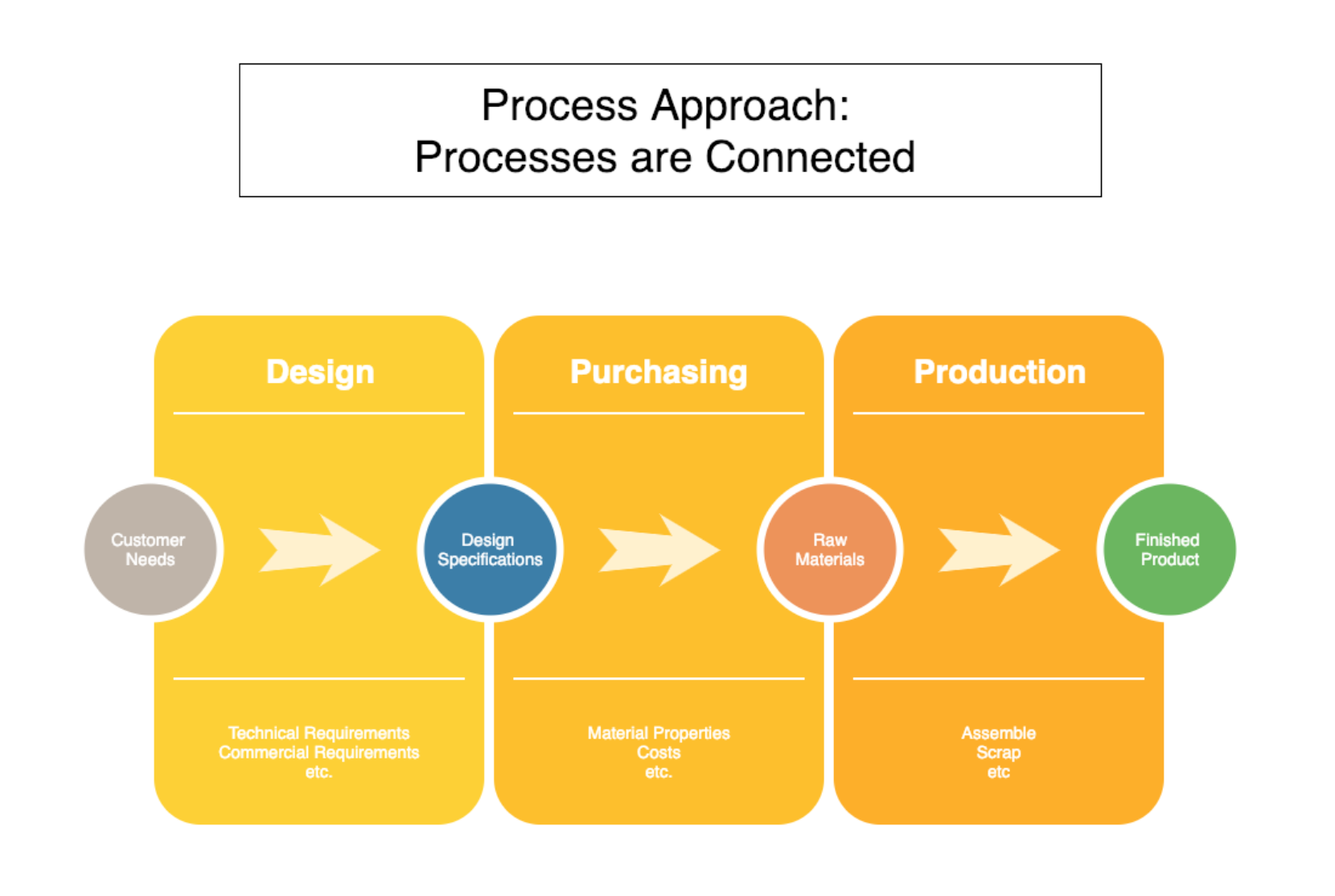
Source: The9000Store
Here are tips to make sure your employees stick to the processes:
- Leverage total quality management tools, like flowchart, to properly define tasks and delegate them; be as transparent and accurate as possible, so that everyone understands who does what
- A visual action plan can help people easily keep track of progress
- Study the impact of your business processes on customers, stakeholders, and suppliers
- Monitor your activities to identify opportunities for improvement
4) Integrated System
If your organization is looking for an edge over competitors, it is important to have an integrated system. How can you establish an integrated system? All departments in your organization should be connected, like organs in your body. They must have a complete understanding of policies, objectives, standards, and processes and work in harmony. Integrated systems can help you easily identify areas of improvement.
Here’s how you can put this principle to effective use:
- Make sure your work culture prioritizes quality over quantity
- Give your employees the big picture; use visual representations to help them understand where their contributions fit in
- Provide adequate training to employees who need to master new processes
- Make use of as-is process analysis
5) Strategic and Systematic Approach
Identifying, comprehending, and managing processes will help you streamline your business. The idea is to make sure your team is paying attention to important tasks; that way, you can avoid wasted time and increase the overall efficiency of the business. In a systematic approach, everyone stays in the loop - all team members have access to the updated information pertaining to all business processes. This allows easy identification of roadblocks.
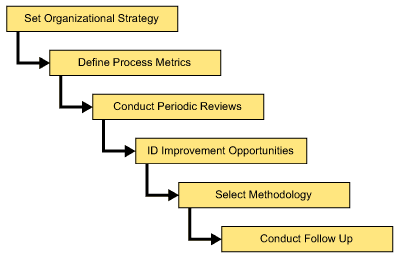
Source: iSixSigma
Here are tips to execute this principle:
- Train your employees enough to help them independently complete their tasks in the process
- Establish continual improvement as a metric that can be measured by employees
- Try to continuously improve your processes. Upgrade your resources whenever required, to attain maximum efficiency
- Appreciate every process improvement and innovation; reward when possible
6) Continual Improvement
A market is a strange place; trends change, requirements evolve, customers change their minds - staying ahead of these changes is not an easy task. Continual improvement is a goal every business needs to perpetually pursue. It’s all about improving your knowledge, boosting your performance, reacting to market changes, fixing roadblocks, and identifying opportunities to grow. Remember that the ultimate goals of your continual improvement should always align with the objectives of your organization.
Here are tips to help you implement continual improvement:
- Motivate your employees to take on new challenges; provide them with training
- Establish continual improvement as a measurable objective for your employees
- Always invite and encourage innovations and improvements
7) Fact-based Decision Making
The most effective decisions are always born out of rational data analysis. Assumptions come with uncertainties; they have no value in the world of business. Extensive data gathering and proper scrutiny can enable you to make sound judgements. Informed decisions and choices can help your business flourish in the long run. You can also defend or modify your previous decisions, based on actual data.
Here are tips to make the most of this principle:
- Only make use of reliable and accurate data
- Be transparent by making your data available to stakeholders
- Pair your inference with your experience and judgement
- Be careful with the methods you use to procure data
8) Communications
Communication has an indispensable role in business success. If your communication plan is rudimentary, your processes are likely to fail. Everyone in the organization needs to have a clear understanding of the plans and strategies used to achieve goals. This principle boosts cross-departmental rapport, employee morale, and confidence. It will also help you measure the success of your current processes and policies.
The following are crucial tips to seamlessly implement this principle in your organization:
- Try to get your employees involved in the process of decision-making
- Make sure there’s an official channel of communication that keeps everyone in the loop; nobody should miss important updates or policy changes
- Validate that everyone knows where they fit into the structure of the organization and how they add value
Applications of Total Quality Management in Industries
Does total quality management work? Yes, it does. The increased adoption of TQM in countless industries over the years is a testament to the success of this management technique.
Total quality management is the finest version of management. Its techniques can generate reliability and help you successfully implement innovative ideas in many industries and scenarios.
Here are popular total quality management examples:
1) Total Quality Management and Healthcare Industry
The techniques of TQM are necessary for both public and private healthcare organizations. It’s leveraged to reduce costs, increase patient satisfaction, and improve the quality of patient care. Overall quality is also dependent on factors, like the quality of doctors.
Here are tips to keep in mind:
- The patient is the priority; the quality of treatment should not be compromised
- The manager should be an effective leader who can track activities and motivate staff to achieve objectives
- All employees should have a fair understanding of where their services fit and how important they are
- Consistent checks for opportunities for growth and improvement are key to better quality
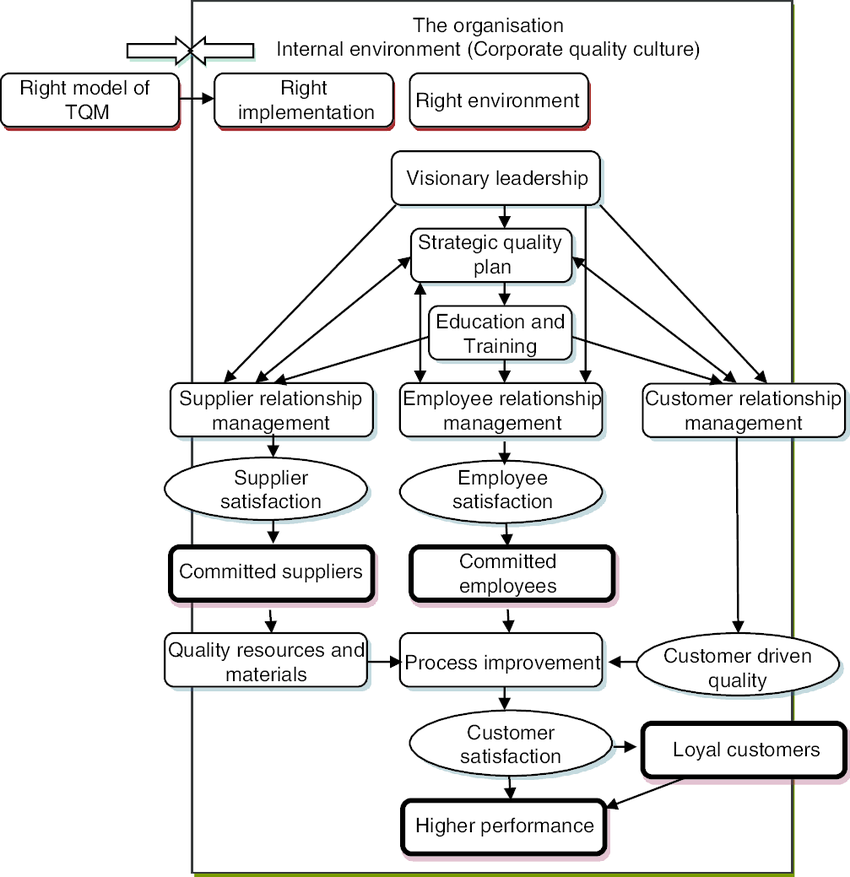
Source: ResearchGate
2) Total Quality Management and Multinational Companies
Multinational corporations are always at the forefront of intense niche wars. Quality management is one of the most effective ways for them to beat their competition. Large organizations have always promoted the implementation of TQM techniques for numerous benefits.
Remember these points while implementing total quality management in your company:
- Thorough market research should be conducted to understand trends
- Customers are given primary importance; products are developed around their requirements
- Resources should be upgraded and checked for malfunctions
- Employee and stakeholder relations are to be handled with care
- Proper communication channels should be established
3) Total Quality Management and Education
Though originally developed for industrial purposes, total quality management has garnered the attention of educational institutions. The ultimate objective of using TQM techniques in education is to develop a teaching/learning process that produces good examination results. TQM methods can be used to improve the quality of instruction, and eventually inspire students to become quality thinkers and learners.
- Encourage faculty to expand their knowledge
- Motivate students to be active learners and thinkers
- Continually improve the quality of instructional methods and media used
If you want to master the techniques of total quality management, get started with GreyCampus, a premier provider of quality management certification training programs. Its range of Lean Six Sigma training programs comes with guidance from industry experts, live bootcamps, mentorship, access to quality learning materials, simulated exams, and more.
Want To Master Quality Management Principles? Consider Joining a Bootcamp Today!